
8 Oldest Founded Towns to Visit in Kansas
The State of Kansas has a long and storied history. In 1803, most of what would become modern-day Kansas was acquired in the Louisiana Purchase, with the exception of a southwest portion of the state, which still belonged to Spain, then later Mexico, and then later the Republic of Texas until 1848.
Kansas was part of the rapid westward expansion of the United States, codified by Congress in the Kansas-Nebraska Act of 1854, which established the titular two lands as official American territories. Around the same time, the historical misadventure known as 'Bleeding Kansas' occurred. This amounted to a violent competition between slaveholding and free states to dispatch partisans to the new territory in an effort to sway the balance of power in Washington, D.C., and served to presage the coming Civil War. Ultimately, Kansas was admitted to the Union as a free state in January of 1861.
All throughout these formative decades, Kansas experienced a constant influx of settlers. Needing places to live, these new arrivals built the state up by establishing hamlets and trading posts. Eventually, these early settlements flowered into the Kansan towns and cities we know today. But which are the oldest? From tales of Native American chiefs to battles for the freedom of slaves, each town has a unique tale to share. Moreover, they boast plenty of attractions that beckon travelers from all over the nation.
Leavenworth
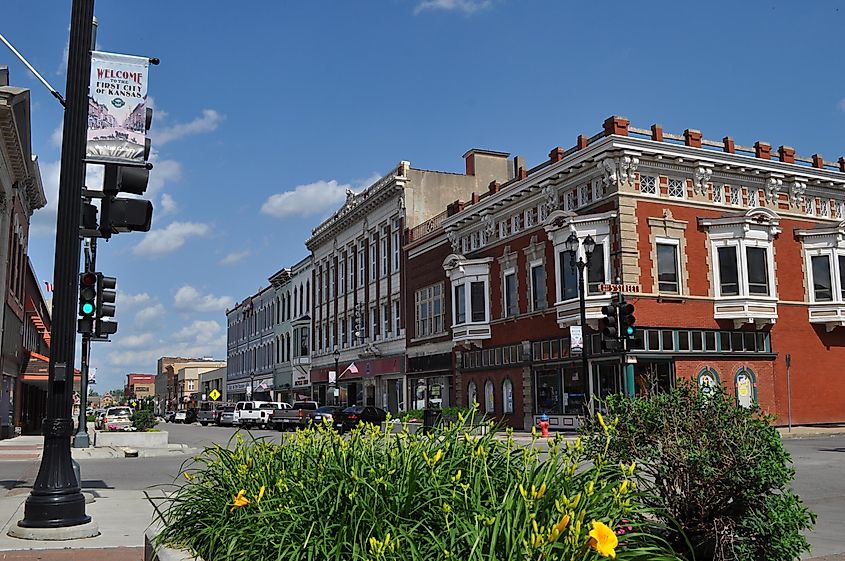
The first town ever to be incorporated into the State of Kansas was Leavenworth, which achieved that distinction in 1854. Underscoring this fact, Leavenworth's official municipal motto is "First City of Kansas." The town's placement on the banks of the Missouri River made it a desirable destination for runaway slaves—most especially from nearby Missouri, which was a slaveholding state—in the tense few years before the Civil War broke out.
Interestingly, the town of Leavenworth was established south of Fort Leavenworth, which was itself founded in 1827, making the military post 27 years older than its namesake civilian settlement. As of today, visitors can indulge in the history with a range of rustic attractions. Some of the most famous include the Chapel of the Veterans Cathedral, Carroll Mansion, and the C.W. Parker Carousel Museum. From 1800s Victorian architecture to exhibits on historic carousels, each site showcases a different side of Leavenworth’s past.
Lawrence
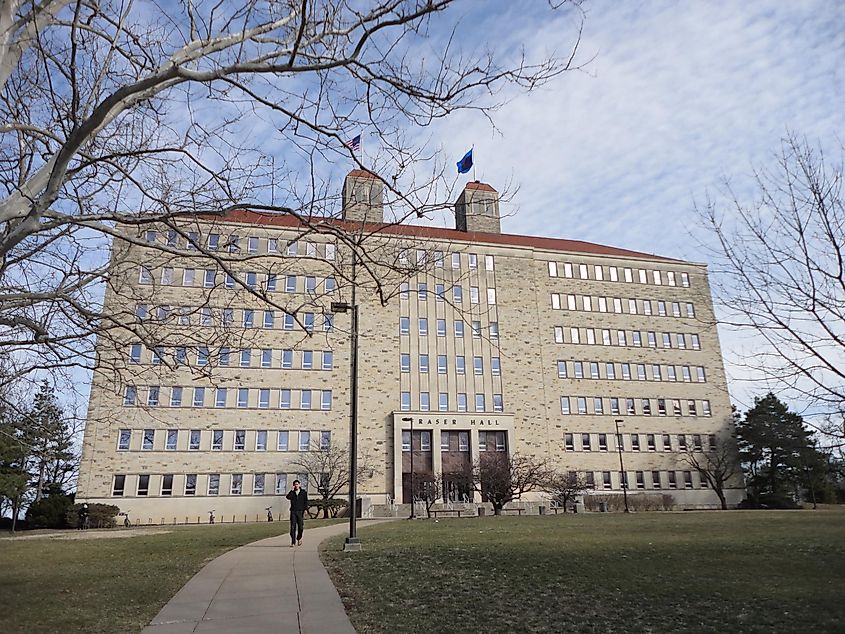
Also founded in 1854, Lawrence, Kansas was established by a group of religious abolitionists from Massachusetts called the New England Emigrant Aid Company. This organization wanted to create a township reflecting their specific kind of Christianity and their staunch anti-slavery worldview. As such, Lawrence quickly became a dependable stop on the western portion of the Underground Railroad, and within twelve months of its inception, the town had spawned three different newspapers decrying the immorality of slavery and producing content that reinforced Kansas' status as a free territory.
Lawrence served as the backdrop of a series of important events during the 'Bleeding Kansas' conflict, including an armed standoff called the Wakarusa War, as well as the Sacking of Lawrence, wherein a group of pro-slavery settlers pillaged the town. Today, the town’s rich past is prevalent through the vibrant culture, and tourists have a range of ways to spend the day. For example, Lawrence plays host to several festivals each year. Of note are the Lawrence Busker Festival, the Free State Film Festival, Art in the Park, and the St. Patrick's Day Parade. They are a world of fun with live music, stellar performances, and great food.
Atchison

In stark contrast to the philosophy that led to the founding of Lawrence, the town of Atchison, Kansas was instituted to ensure there was at least one majority pro-slavery community in the newly minted US territory. Created by a group of settlers acting on behalf of Missouri Senator David Rice Atchison, a notorious defender of the practice of owning slaves, the town is another in the Kansas inaugural class of 1854. For the first few years of its existence, Atchison remained a bastion for the pro-slave agenda. However, despite the intentions of its founding fathers, by 1858, the tide of public opinion had swung in the opposite direction, and abolitionists had gained control of the town.
History enthusiasts can choose between attractions like the Amelia Earhart Birthplace Museum and Santa Fe Depot Rail Museum. The former showcases the tale of Amelia Earhart, as Atchison is her birthplace, while the latter is a showcase of local railway memorabilia. Beyond the museums, one can catch a show at Theatre Atchison, take the historical trolley tour, or attend the International Forest of Friendship Annual Celebration and Induction Ceremony.
Lecompton
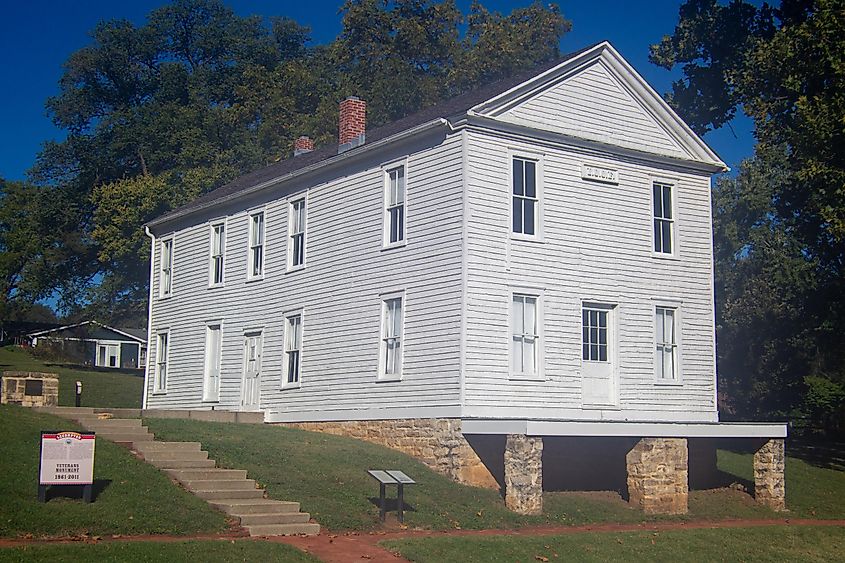
The town of Lecompton was constructed in 1854, and it served as the official territorial capital of Kansas from 1855 to 1861. The town was initially called Bald Eagle but changed its name to Lecompton to honor then-Chief Justice of the Territorial Supreme Court Samuel Dexter Lecompte, a man noted for his extreme pro-slavery opinions. Considering this, perhaps it is unsurprising that, much like Atchison, Lecompton was a well-known den of pro-slavery sentiment and sympathy for the southern states throughout the 'Bleeding Kansas' period and into the Civil War.
In 1857, a convention met in the town's Constitution Hall and drafted the so-called Lecompton Constitution, a document specifying that Kansas would only enter the Union as a slave state. The United States Congress spurned the Lecompton Constitution after an intense nationwide debate. It was one of the primary subjects of the legendary Lincoln–Douglas Debates between Democratic Senator Stephen Douglas of Illinois and his challenger, Republican Abraham Lincoln.
When visiting Lecompton, one can experience the past at Constitution Hall, a historic building from 1857. From rustic memorabilia to interesting stories, it is a wonderful place to learn about the town’s past. Meanwhile, tourists also adore visiting the Territorial Capital Museum and shopping at Claymama's Art Workshop.
Topeka
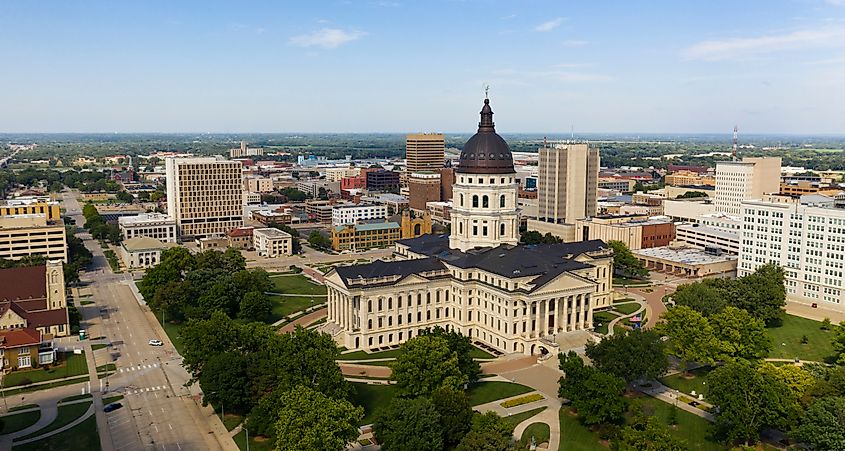
Rounding out the quintet of Kansan towns formed in 1854, Topeka is one of the best-known cities in Kansas, partially because of its large population (126,587 as of the 2020 census) and partly because it is the state capital. In its earliest incarnation, the site of what would later become Topeka served as a disembarkation point for a ferry service that transported pioneers along the Kansas River to the easternmost point of the Oregon Trail. By the 1850s, steamboats were docking regularly at the site, unloading the vast quantities of food and supplies needed to sustain those forwarding the cause of American westward expansion. Topeka's first permanent residence was completed in 1854, and it was formally chartered as a city in 1857. By the onset of the 1860s, it had become a significant commercial hub, offering many of the extravagances and luxuries available in other large American cities.
In 1866, construction began on the Kansas State Capitol building in central Topeka, although it would take another 37 years to complete. The State Capitol building is now a landmark of significance, displaying grand architecture that exudes 150 years of local history. Similarly, those interested in this vibrant town’s tales can visit areas like the Combat Air Museum and Brown v. Board of Education National Historical Park, which are some of the most famous.
Olathe
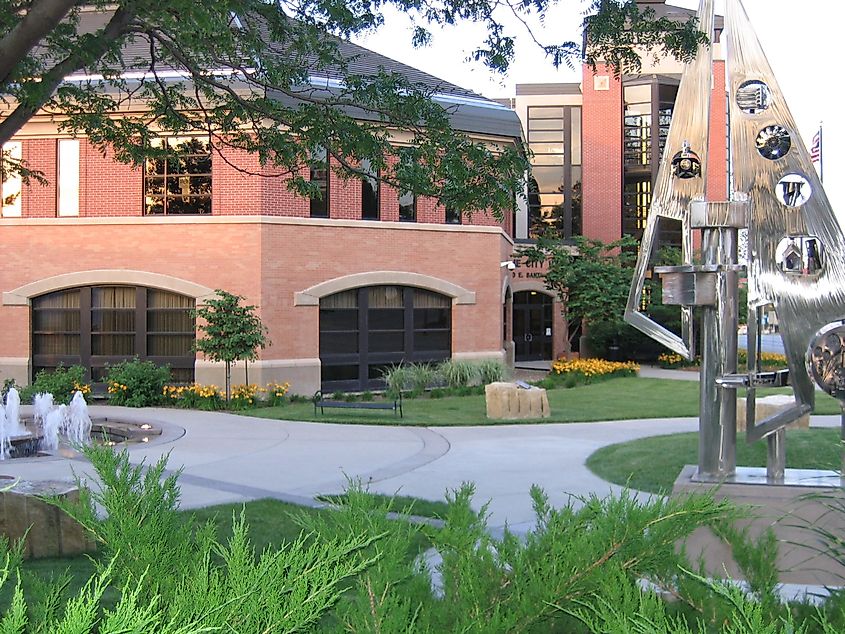
As Kansas continued to develop, it welcomed an abundance of pioneers seeking to set up new frontier communities. In that spirit, Olathe was established in 1857 in the northeast portion of the territory. One myth of the town's creation states that after staking the site, town founder John T. Barton was overcome by the beauty of the wildflowers covering the area. Inspired, he asked his Shawnee interpreter and companion how to say "beautiful" in his native language. The interpreter replied, "Olathe", and Barton decided at that moment to name the town accordingly. To evidence this tale, the town’s natural beauty is prevalent in areas like Lake Olathe Park and Prairie Center Park.
Olathe found its economic footing as a station along the Oregon Trail, the California Trail, and the Santa Fe Trail, catering to travelers heading west. It was named the seat of Johnson County in 1859. Things to do in Olathe include strolling through the town's lauded KC Auto Museum, visiting the historic Mahaffie Stagecoach Stop & Farm, and eating a great meal while taking in a film at the Fork & Screen section of AMC Studio 28 Theatre.
Emporia
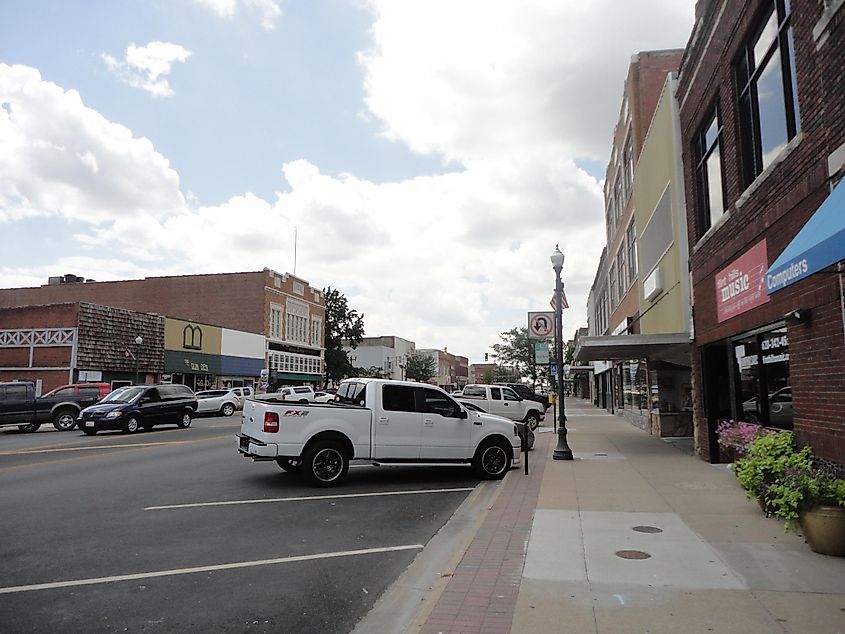
Emporia, Kansas was established in 1857 on land best classified as upland prairie, and named after a city in ancient Carthage with a reputation as a thriving commercial center. After a fledgling first few years of life, Emporia first came to prominence when it was named the seat of Lyon County in 1860. The town gained real notoriety in 1869 when the Union Pacific Railway, Southern Branch finished laying down tracks between the town and Fort Riley, a US Army outpost strategically located deeper within the territory. The next year, the Atchison, Topeka, and Santa Fe Railway also added Emporia to its growing regional network, and the town grew into a bustling railroad juncture.
This growth continued for many years, and Emporia is now a thriving college town with many recreation options. Some of the best bets are David Traylor Zoo of Emporia, Emporia Arts Center, and Flint Hills National Wildlife Refuge. From showcasing local art pieces to friendly wildlife, there is something for everyone here. The town also hosts two of the region’s largest sporting events, Unbound Gravel gravel bike races and Dynamic Discs Open disc golf.
Wichita
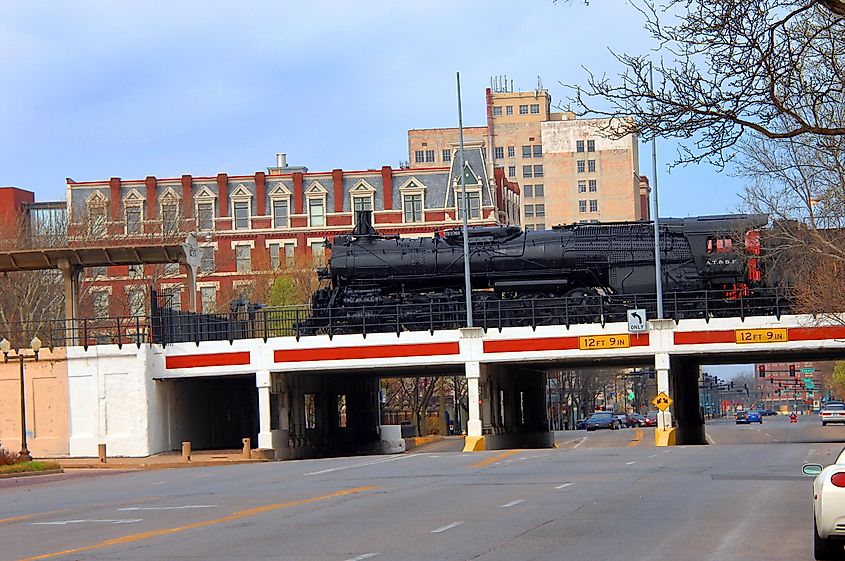
Wichita, the most populous town in Kansas, offers visitors a mix of history and entertainment. Once just a plot of land, the area received its first permanent structure in 1868, when a group of investors headed by a surveyor constructed a log cabin meant to be used as a hotel, community center, and post office. This crucial first building attracted trappers, hunters, and traders operating in the surrounding area, and within a year, the settlement had hundreds of residents. In 1870, the first streets were laid down, and later that same year, Wichita was formally incorporated as a city.
Seated along the Chisholm Trail, Wichita became a terminus for cattle drives coming north from Texas to access rail transportation to the more developed eastern parts of the United States. Rapid growth followed, and Wichita quickly earned the nickname "Cowtown." This characterization fed the reputation of the new state. To this day, the city of Wichita and the state of Kansas are celebrated for their barbeque culture and tasty, high-quality steaks.
With such an interesting past, history abounds, and plenty of landmarks beckon curious travelers. Some of the most popular are the 1886 Carey House, 1920 Calvary Baptist Church, and Kansas Aviation Museum. Whether it is a guided tour through rustic rooms or an insight into local aviation exhibits, these sites have lots to do. Apart from the past, Wichita Art Museum, Sedgwick County Zoo, and Exploration Place Arts and Entertainment Center garner the most glowing reviews from visitors.
Conclusion
Kansas has grown exponentially in the one hundred and seventy years since Leavenworth was established. The state now boasts major metropolitan areas like modern-day Topeka and Wichita, as well as more than twenty towns with populations over 20,000. The Sunflower State also contains a strong and diverse commercial base, a robust transportation infrastructure, and a thriving tourist industry. None of this would have been possible without the hard work, dedication, and long-term vision of the state's earliest settlers in founding these first eight towns during the middle decades of the 19th century.











